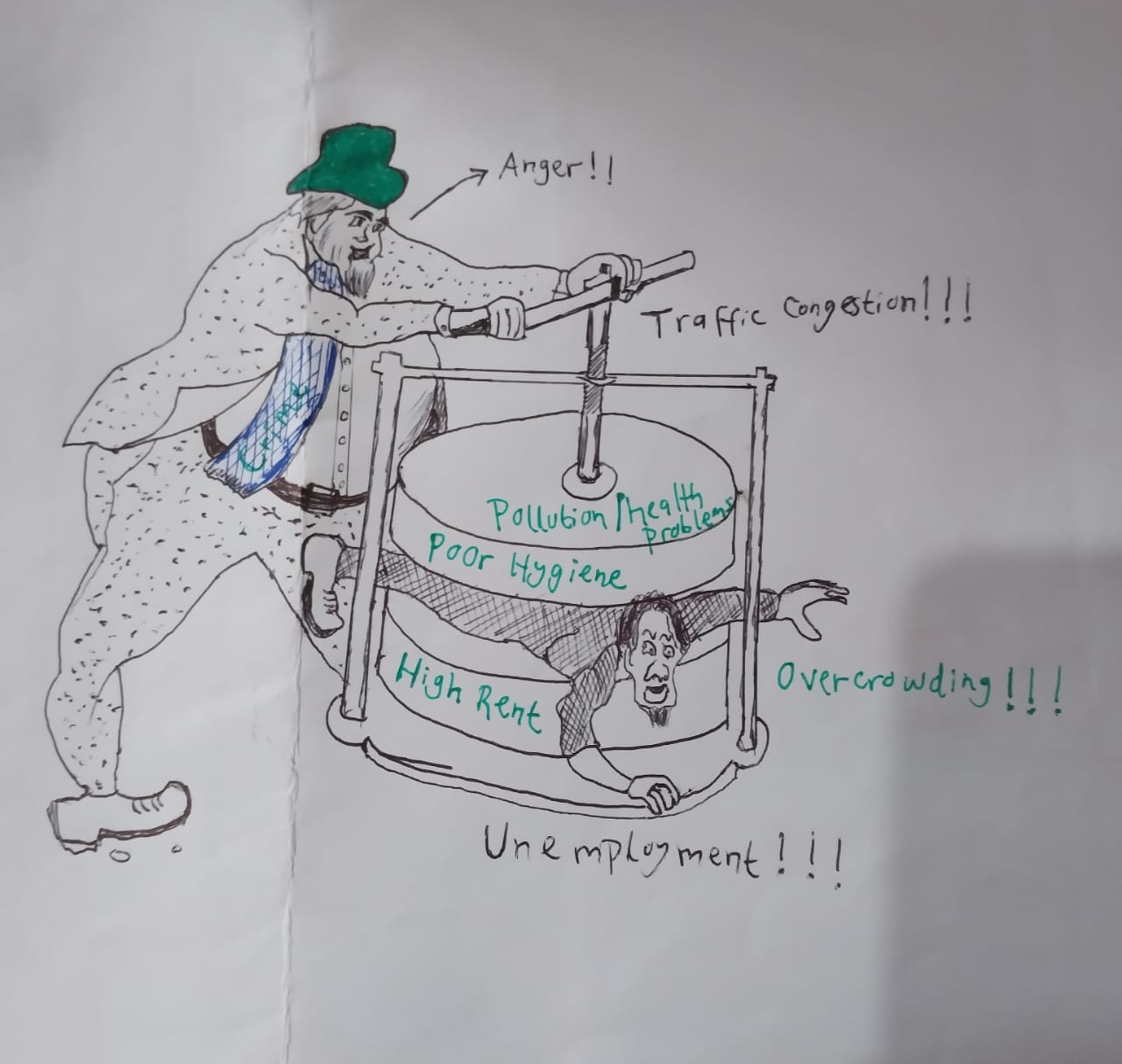
The political cartoon above illustrates how urbanization and industrialization have several effects on urban cities. There is a certain symbolism that the above cartoon portrays. Pollution, health problems, poor hygiene, high rent, low wages, overcrowding, unemployment, and traffic congestion are among the effects of industrialization and urbanization.
Urban Pollution and Health Problems
The above cartoon reflects the pollution problem in urban cities. Industrialization results in urban pollution, leading to health problems such as allergies, infertility, food poisoning, cancer, and premature deaths (Adimalla, 2020). The pollution is caused by exhaust fumes coming from exhaust pipes of moving cars in urban cities.
Poor Hygiene
In urban cities, hygiene is so poor whereby water is lacking in several houses. Sewage infrastructure sometimes lacks in metropolitan areas due to overpopulation and rapid population growth (Farah et al., 2015). Sewage facilities management is a major problem for municipalities and local governments. Because of poor sanitation and uncontrolled sewage flow, nearby streams, rivers, lakes, and seas are polluted.
High Rent
Urbanization has increased the rent costs due to overpopulation in the urban cities. As cities and towns grow in population, so do the number of people living there. As the population grows, there is still a housing shortage in metropolitan areas (Gentili & Hoekstra, 2019). Therefore, house shortage automatically leads to higher costs of rent.
Traffic Congestion
An increasing number of individuals who live in urban areas leads to traffic congestion, especially on the pedestrian pathways along major roads. Traffic congestion and automobile pollution increase as the population grows (Buchanan, 2015). Rush-hour traffic is a major concern in urban areas since so many people travel to work. Similarly, more and more individuals are forced to move around the city as it grows, which causes traffic jams and congestion on the roadways.
Unemployment
Due to overpopulation in urban cities, people lack job opportunities. As illustrated in the cartoon above, urban areas have the highest rates of unemployment, which is exacerbated even worse among those with higher levels of education (Engbersen et al., 2019). More than half of the world’s unemployed adolescents reside in metropolitan areas, according to estimates. Moreover, despite the high wages in cities, the high cost of living makes those wages appear absurdly cheap. Individuals relocating from rural areas to urban areas in search of job opportunities are higher, thereby resulting in limited spaces for employment.
References
Adimalla, N. (2020). Heavy metals pollution assessment and its associated human health risk evaluation of urban soils from Indian cities: a review. Environmental geochemistry and health, 42(1), 173-190.
Buchanan, C. (2015). Traffic in Towns: A study of the long-term problems of traffic in urban areas. Routledge.
Engbersen, G., Schuyt, K., Timmer, J., Van Waarden, F., & Wilson, W. J. (2019). Cultures of unemployment: A comparative look at long-term unemployment and urban poverty. Routledge.
Farah, S., Karim, M., Akther, N., Begum, M., & Begum, N. (2015). Knowledge and practice of personal hygiene and sanitation: A study in selected slums of Dhaka city. Delta Medical College Journal, 3(2), 68-73.
Gentili, M., & Hoekstra, J. (2019). Houses without people and people without houses: A cultural and institutional exploration of an Italian paradox. Housing Studies, 34(3), 425-447.
